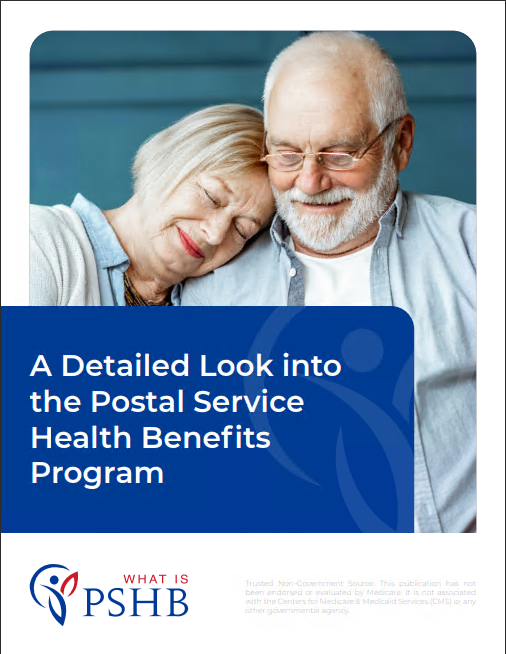Key Takeaways
-
If you’re feeling lost on LiteBlue, you’re not alone. Learning how to manage your Postal Service Health Benefits (PSHB) without relying solely on it can save you time and frustration.
-
In 2025, managing PSHB as an employee or retiree means knowing the right platforms, deadlines, and steps—and staying proactive every step of the way.
The LiteBlue Struggle in 2025
If you work for or retired from the U.S. Postal Service, you already know LiteBlue has long been the primary hub for accessing employment and benefits information. But since the switch to the Postal Service Health Benefits (PSHB) Program in 2025, many employees and retirees report having trouble finding what they need on the platform. Confusing menus, outdated links, or information buried behind multiple logins can make it difficult to manage your health coverage efficiently.
If you’ve felt stuck trying to navigate PSHB on LiteBlue, you’re not alone. Fortunately, there are smarter ways to handle your benefits.
Start with What Changed in 2025
The launch of the PSHB Program in January 2025 replaced previous Federal Employees Health Benefits (FEHB) plans for postal employees and annuitants. Here’s what that means for you:
-
New Platform, Same Expectations: While LiteBlue remains central for employee access, annuitants must now use KeepingPosted.org to manage health benefits.
-
Enrollment Rules Shifted: Open Season still runs from November to December each year, but your default auto-enrollment could lead to coverage that doesn’t fit your needs.
-
Medicare Coordination Matters More: If you’re 65 or older, or turning 65 this year, enrolling in Medicare Part B may be mandatory to keep your PSHB coverage.
Understanding what’s changed sets the foundation for managing your benefits like a pro.
Know Where to Manage What
Don’t rely solely on LiteBlue. Here’s where and how you should manage different aspects of PSHB:
1. For Employees
-
Use LiteBlue: Log into LiteBlue with your Employee ID and password.
-
Access PostalEASE: From LiteBlue, click into PostalEASE to review PSHB options and make changes during Open Season.
-
Use the PSHB Plan Comparison Tool: OPM provides a side-by-side plan tool to help you understand costs, coverage, and features.
2. For Retirees
-
Use KeepingPosted.org: This is now the go-to site for retired USPS employees.
-
Track Annuitant Premiums: Make sure you’re paying the correct amount. In 2025, monthly premiums for retirees typically range from $241 for Self Only to over $560 for family coverage.
-
Watch for Annuitant Booklets: These are mailed out annually with plan details and changes. Don’t toss them aside.
Stay on Top of Enrollment Deadlines
One of the easiest ways to lose control of your benefits is by missing a deadline. Here’s what to watch for in 2025:
-
Open Season: Runs annually from November to December.
-
Special Enrollment Period for Medicare Part B: This period ended in September 2024. If you missed it and didn’t enroll in Part B, you could lose access to your PSHB plan in 2025.
-
Turning 65 in 2025? You’ll need to enroll in Medicare Part B during your Initial Enrollment Period (IEP) to keep your PSHB benefits.
Mark your calendar and set reminders—PSHB is not forgiving of missed enrollment windows.
Understand Your Plan’s Cost Structure
Cost-sharing under PSHB works similarly to traditional insurance but varies widely depending on the plan you choose. As of 2025, here’s what you should expect in general:
-
Deductibles: In-network deductibles typically range from $350 to $1,500.
-
Copayments: For primary care visits, expect $20–$40; specialists may range from $30 to $60.
-
Coinsurance: In-network services often require 10% to 30% coinsurance.
-
Out-of-Pocket Maximums: These cap your spending, usually between $7,500 (Self Only) and $15,000 (Family).
Knowing your out-of-pocket responsibilities can help you plan your annual healthcare budget more accurately.
Don’t Ignore Medicare Requirements
If you or a family member is Medicare-eligible, PSHB plans in 2025 have a major requirement: you must enroll in Medicare Part B unless you meet a valid exemption.
Exemptions Include:
-
Retired on or before January 1, 2025
-
Aged 64 or older as of January 1, 2025
-
Residing outside the United States
-
Covered under VA or Indian Health Services
Failure to enroll in Part B without meeting one of these exemptions can result in the loss of your PSHB coverage entirely. Coordination with Medicare also helps lower costs in many plans, such as reduced copays or waived deductibles.
Know What PSHB Doesn’t Cover
PSHB plans do not include dental and vision by default. To maintain or add this coverage, you must enroll separately through the Federal Employees Dental and Vision Insurance Program (FEDVIP). This remains unchanged from previous years.
Additionally, Flexible Spending Accounts (FSAFEDS), life insurance (FEGLI), and long-term care (FLTCIP) are not affected by PSHB changes. But managing them requires access through different portals, not LiteBlue or KeepingPosted.
Learn How to Compare Plans Effectively
In 2025, the PSHB system includes a wide variety of plans. To choose the one that fits your needs:
-
Use OPM’s Comparison Tools: These let you filter by premium, deductible, coinsurance, and network coverage.
-
Read the Official Brochures: Every PSHB plan offers a downloadable guide showing benefits, exclusions, and cost breakdowns.
-
Call a Licensed Agent (Optional): For many retirees, working with a licensed agent makes the selection process clearer.
Keep Your Information Updated
Keeping your contact information current is critical. Whether you’re on LiteBlue or KeepingPosted, make sure the following are correct:
-
Mailing Address
-
Phone Number
-
Email Address
-
Dependent Details
Outdated information could mean missing important notices about eligibility, plan changes, or enrollment deadlines.
Watch for Annual Notices
Each fall, you’ll receive an Annual Notice of Change (ANOC) in the mail or electronically. This document outlines:
-
Any changes in your plan’s costs or coverage
-
Adjustments to provider networks or drug formularies
-
Deadlines for changing plans during Open Season
Read your ANOC carefully—don’t just assume everything is the same as last year.
Tips for Avoiding Common Pitfalls
-
Don’t Skip Open Season: Even if you’re auto-enrolled, your default plan may not meet your needs.
-
Don’t Assume Medicare Enrollment Is Automatic: You must actively enroll in Part B unless exempt.
-
Don’t Wait Until the Last Minute: Systems like LiteBlue and KeepingPosted can slow down near deadlines.
-
Don’t Overlook Plan Documents: Brochures and comparison tools exist for a reason—use them.
When You Need Help
If you’re feeling overwhelmed, don’t hesitate to seek help. You can:
-
Call the PSHB Navigator Help Line (1-833-712-7742)
-
Contact HR Shared Service Center for employees
-
Reach out to a licensed agent for personalized guidance
Staying Informed Saves You Time and Money
Managing PSHB in 2025 doesn’t have to be complicated, but it does require attention to detail and proactive planning. Knowing where to go, what to update, and how to compare plans will keep you in control of your health coverage.
If you want clarity and confidence in your choices, talk to a licensed agent listed on this website for professional advice tailored to your situation.






